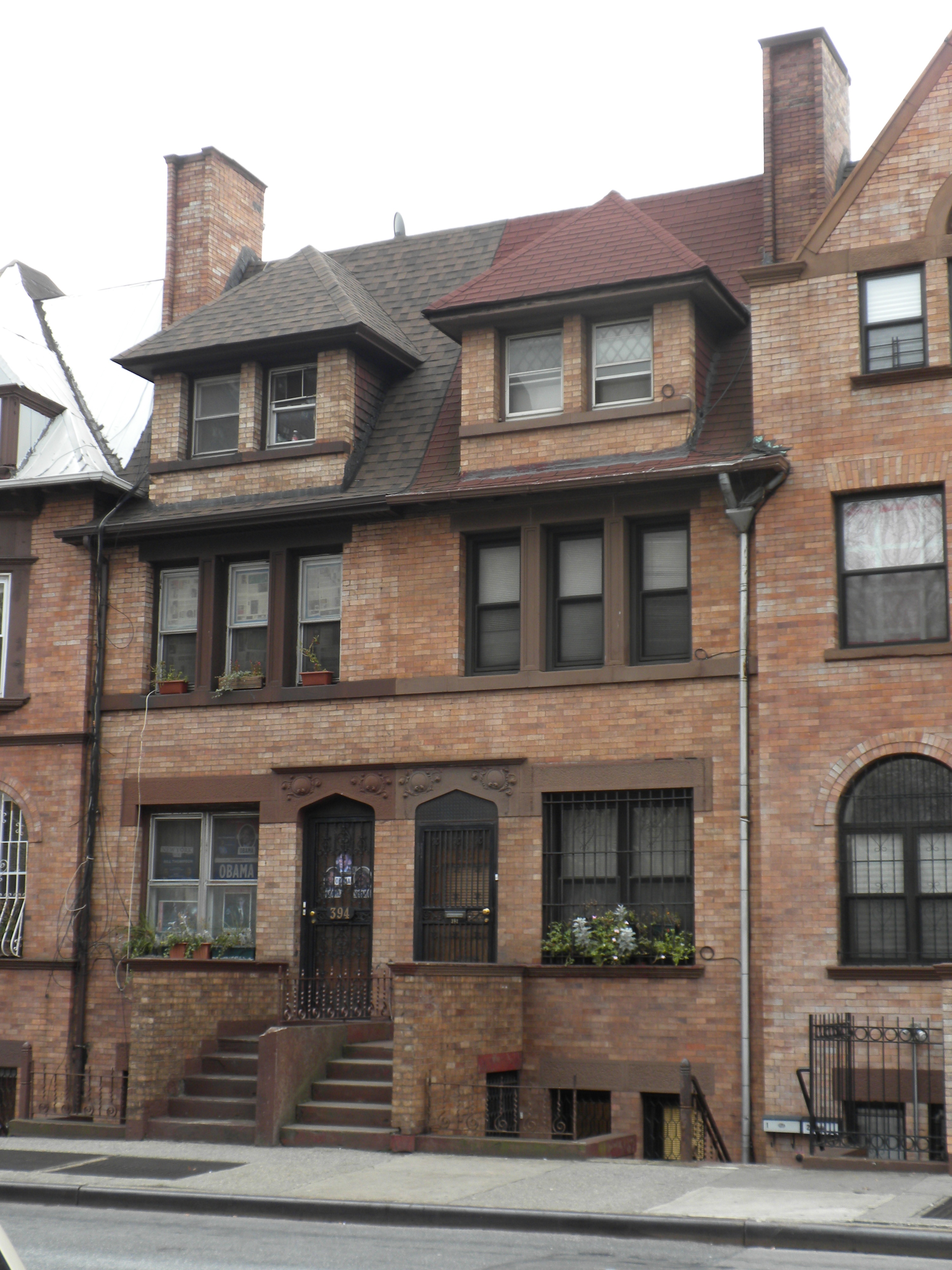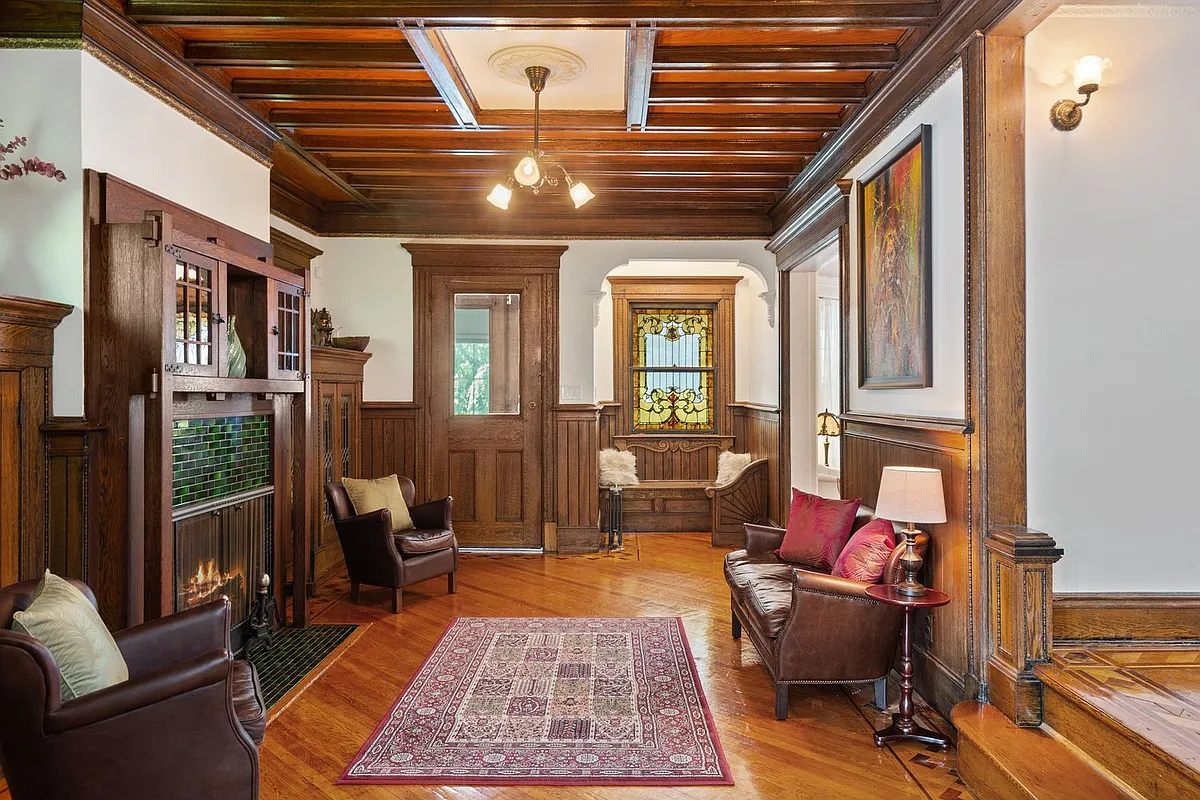Building of the Day: 384-396 Lafayette Avenue
Another architectural mystery solved!

Photo by Suzanne Spellen
Brooklyn, one building at a time.
Name: Row Houses
Address: 384-396 Lafayette Avenue, between Classon and Franklin Avenues
Neighborhood: Clinton Hill/Bed Stuy border
Year Built: 1892
Architectural Style: English style Arts & Crafts
Architect: William Tubby
Other buildings by architect: Clinton Hill Pratt Institute Library, Residence of Bklyn RC Bishop at 241 Clinton, Charles Schieren mansion, 485 Clinton Avenue.
Landmarked: No
The story: Another architectural mystery solved! Ever since I first came to Brooklyn in the early 1980’s, I’ve noticed and liked this row of houses. So, to find out recently that these are Tubby houses is a great treat. There are 10 in the group, and they are all only 14′ wide, with the exception of the corner house. His inspiration for the houses seems to be the English terrace houses of British Arts and Crafts movement, going on in the UK at this time, which directly inspired the American Arts & Crafts Movement. English A&C architects looked to their roots, in vernacular village architecture, designing in brick and timber, with Medieval, Tudor and other historic elements. Tubby took elements from that, and translated it into modern Brooklyn row houses. They are designed to look twice their width by a clever use of rooflines and mirror imaging. Tubby also alternated three different styles, causing the eye to move down the row. The first three groups of two houses are pure in their elements; AABBCC, but then he starts mixing elements, so that by the time you are at the last groups of houses in the middle of the block, the dormers of the B houses, and the oriel bay of the A house are found on a C house body and entryway. That’s good design. Subtle, yet effective, what you would expect from an architect of Tubby’s abilities. His work is no stranger to the neighborhood. He was one of Charles Pratt’s favorite architects, designing the Library and several other buildings at Pratt Institute, as well as a magnificent home for eldest son Charles Pratt, Jr, at 241 Clinton Avenue, now the residence of the Catholic Bishop of Brooklyn. He would go on to design the Pratt summer residence, and Charles Pratt’s mausoleum. He probably got the Pratt job through his employment with E.L. Roberts, another Pratt architect (featured in this BOTD), when he worked in his office, and upon recommendation, designed the Charles Schieren mansion, at 485 Clinton Ave. These houses date to 1892, placing them after the Pratt Mansion, but before the Pratt Institute buildings. Charles Pratt and his son did commission speculative housing for the middle class. This may have been one of their developments. More research is needed.






So how do you know they are 1892 if you don’t know the client?
c
You got that right: NO BOOK, NO PEACE!
NO BOOK, NO PEACE!!!
WRITE A BOOK, MONTROSE!!
I love the way he varied the designs but it was even more interesting to know that as he went down the line, he mixed it up more. I imagine it created a much more dynamic feel to the block than had he simply continued the AABBCC. Thanks for pointing that out, MM.
NO BOOK, NO PEACE
Love these houses…
I was alway curious about these buildings. Again, we see Tubby’s versatility as an architect. Another session in MM’s master class on Brooklyn architecture.
Indeed, these are charming and somewhat modest homes compared to the usual brownstone. They were one of the few things I enjoyed glancing at when I made my long dreary walk to the Classon Avenue G. (the long stretch between Myrtle and Lafayette isn’t the most encouraging place to walk late at night) I take the Clinton/Washington G now, but if there were more of these fellas around, I would have stuck to Classon.
Thanks! I’ve always been fascinated by these houses myself! Between the commercial activity to the west, the adjacent brownstones to the east, and the projects across the street, these pop up so unexpectedly.. . .and handsomely.
Like you, I’ve been passing by these buildings for years and years. Great collection – always wondered who did them.